
Roots
When we cast our minds back to ancient societies, seeking to understand how they viewed hair beauty, we uncover a landscape far richer and more nuanced than mere aesthetic preference. Hair, in those distant epochs, was rarely simply hair. It served as a profound communicator, a living canvas upon which identity, status, spirituality, and belonging were openly displayed. To truly grasp the definitions of beauty held by our ancestors, we must first recognize hair’s fundamental role as a social barometer, a deeply personal and public statement woven into the very fabric of daily existence.
Consider the whispers of time that reach us from archaeological sites, from the intricate combs unearthed in ancient Egyptian tombs dating as early as 3900 BCE, adorned with giraffes and ostriches, suggesting not just decoration, but perhaps ritualistic significance. Or the meticulously preserved wigs, crafted from human hair or plant fibers, found in elite burials, some as early as 3400 BCE. These are not just artifacts; they are echoes of a profound connection between a people and their strands, a relationship that extended far beyond simple appearance.

Hair’s Place in Social Identity
Across many ancient civilizations, the condition and style of one’s hair spoke volumes about their place within the social order. It was a visual shorthand, instantly conveying information about gender, age, marital status, and even profession. For instance, in ancient Egypt, tomb chapels from around 1480 to 1350 BCE show how hair depicted social stratification. Elite men wore elaborate wigs, often above shoulder length, with distinct arrangements of curls or braids.
This practice demonstrated their power and ability to command others, even to the extent of using other people’s hair for their wigs. Conversely, non-elite individuals working outside the home were often shown with their natural hair.
This dynamic was not unique to Egypt. In ancient Greece and Rome, hair served similar purposes. Greek maidens, for example, often wore their hair long before marriage, a symbol of youthful appeal.
Upon marriage, Spartan brides shaved their heads as part of a ritual, while Athenian brides bound their hair for the ceremony. These practices highlight how hair transitions marked significant life milestones.
Ancient hair beauty was a language, speaking volumes about social standing, spiritual connection, and personal identity within a community.
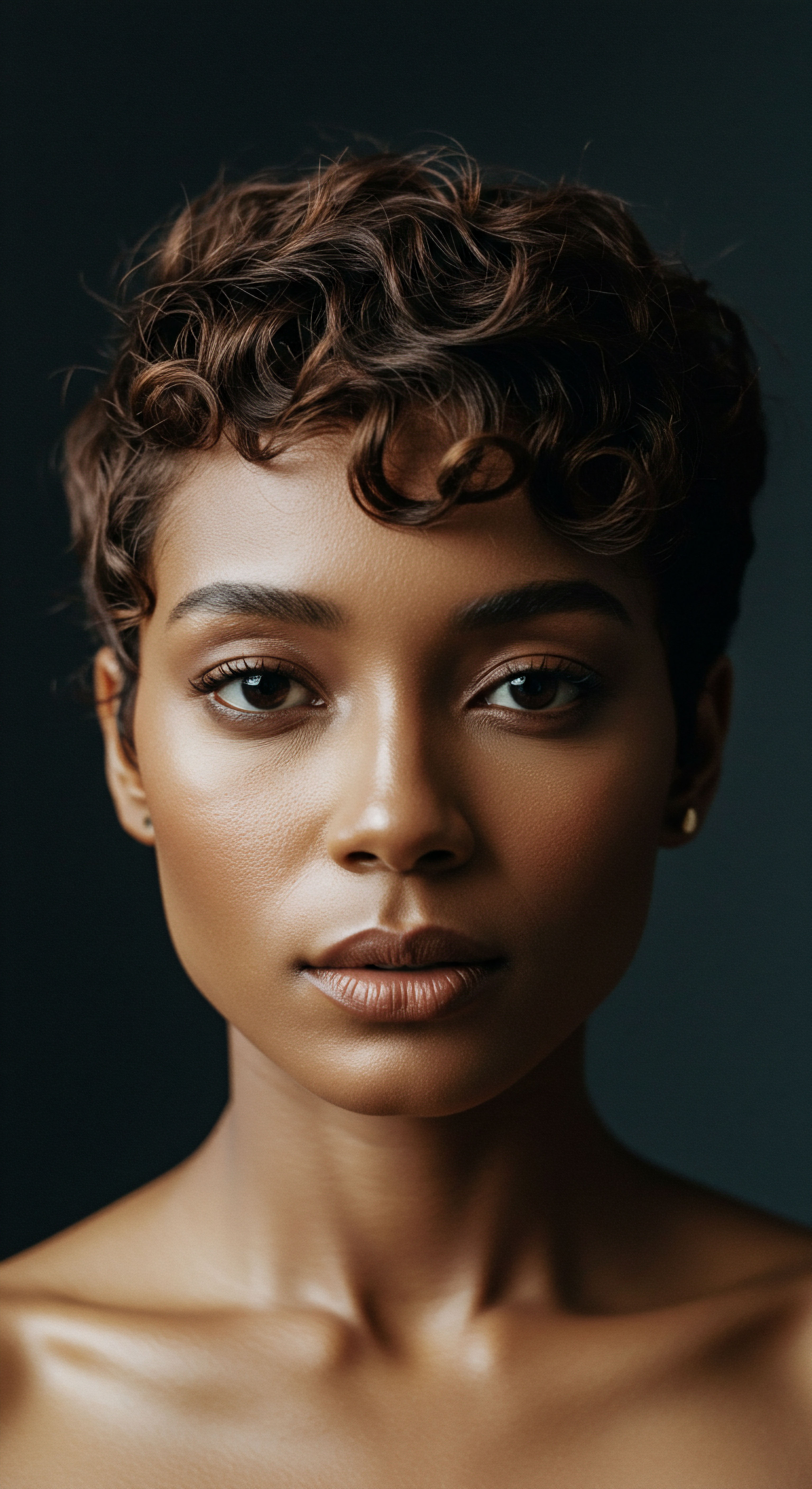
The Anatomy of Ancient Adornment
While modern hair science delves into the molecular structure of keratin and the nuances of porosity, ancient societies understood hair through observation and ingenuity. They recognized its malleability, its capacity to be shaped, colored, and adorned. This practical understanding formed the basis for their beauty standards, which often celebrated length, volume, and intricate styling.
The tools discovered from these eras speak to a sophisticated approach to hair care. Combs, often made of wood, bone, or ivory, were commonplace. Hairpins, crafted from materials ranging from bone to gold, secured elaborate styles.
In ancient Rome, curling rods, known as calamistra, were used to create waves, though in Greece, damp hair might be wrapped around a smooth stick for a similar effect. These simple yet effective instruments allowed for a wide array of coiffures, from simple buns to complex arrangements of braids and twists.
- Combs ❉ Early examples from Egypt (3900 BCE) made of ivory, often with animal motifs.
- Wigs ❉ Used by ancient Egyptians of all genders and classes as early as 3400 BCE, for both aesthetic and practical reasons like lice protection.
- Hairpins ❉ Found in Egyptian burials from around 4000 BCE, used to secure long, upswept styles, sometimes made of precious metals indicating wealth.
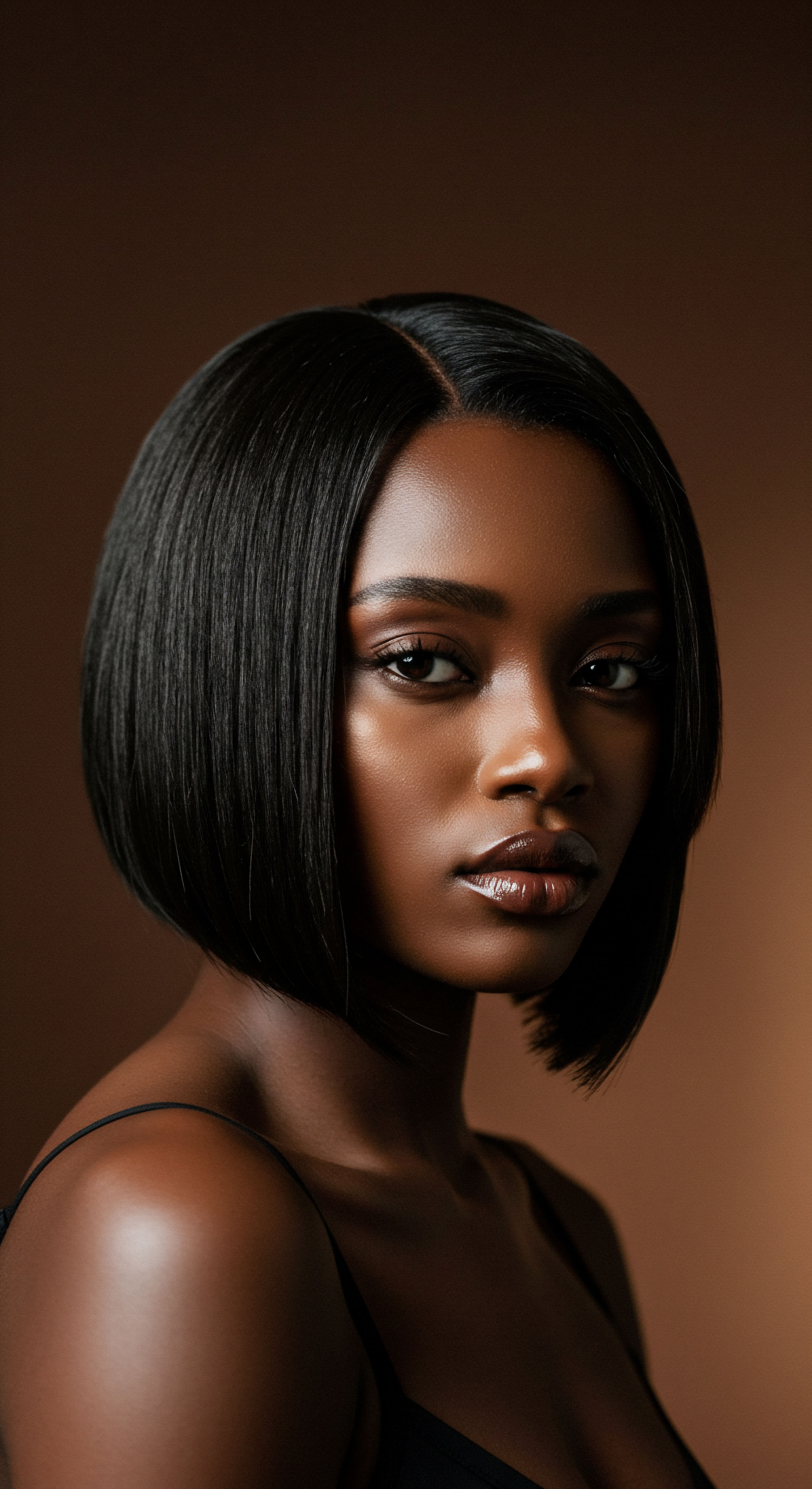
Hair’s Growth Cycle and Cultural Echoes
The natural cycles of hair growth and loss were observed and attributed meaning. The “Lock of Youth” in ancient Egypt, a single braid worn by children until puberty, symbolized this transitional phase. Once puberty arrived, this lock was removed, and boys and girls adopted more adult styles, reflecting their new roles in society. This understanding of hair’s life cycle was integrated into their customs, linking physical changes to societal rites of passage.
The significance of hair in ancient African societies extended beyond mere aesthetics, often carrying spiritual and communal weight. Hair was believed to be a conduit to the divine, the most elevated point of the body, closest to spiritual energy. Specific styles could indicate age, marital status, or tribal affiliation, serving as a visual language. Braiding, for example, was not just a styling technique; it was a communal art, often taking hours, allowing for social bonding and the transmission of oral histories.
These foundational understandings of hair, its structure, its symbolic weight, and its place in daily life, provide the essential context for exploring how ancient societies sculpted their definitions of beauty. It was a beauty that spoke not just to the eye, but to the very soul of their collective existence.
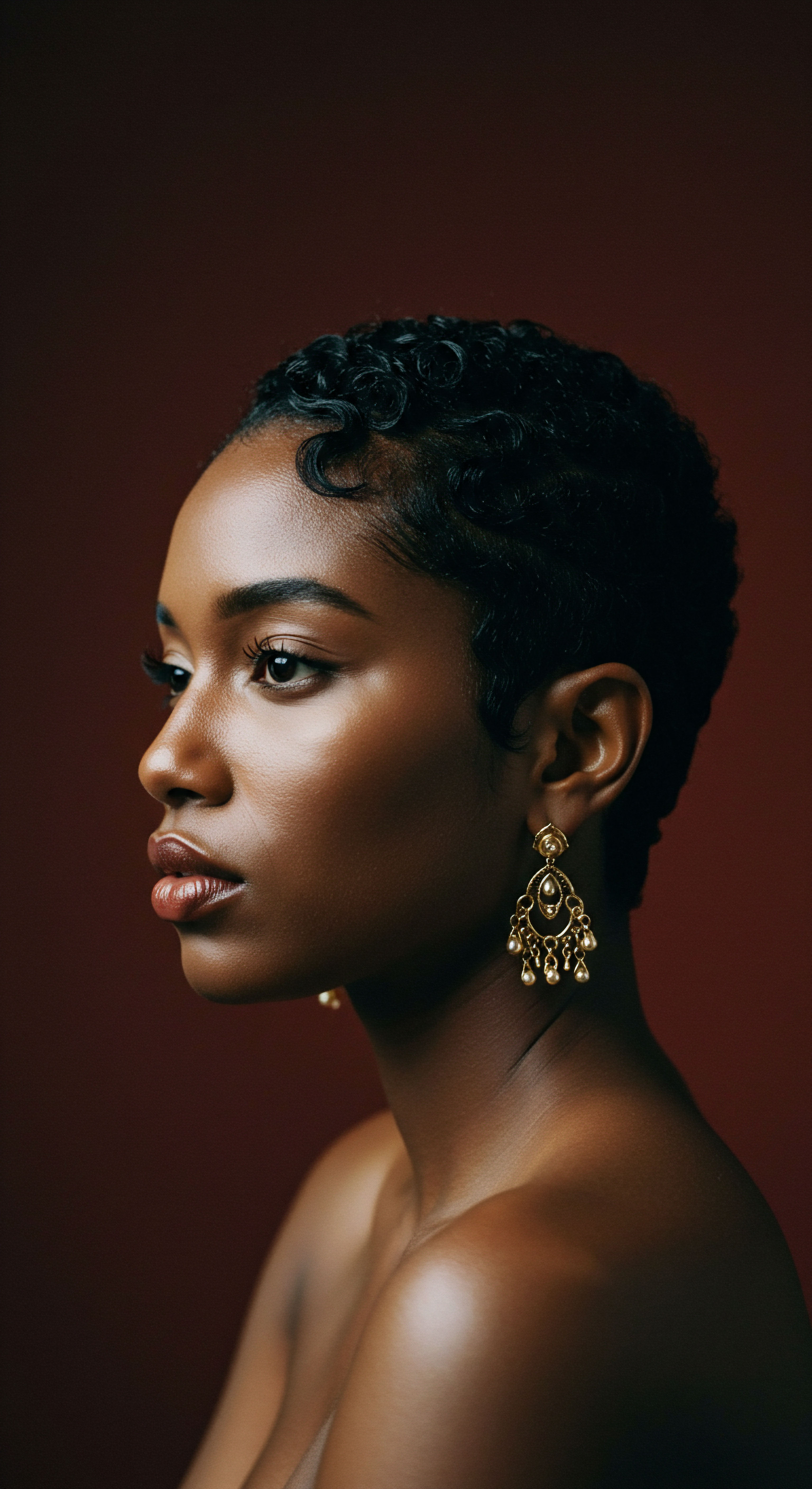
Ritual
As we move from the foundational understanding of hair’s inherent symbolism, our attention turns to the deliberate actions and routines that transformed raw strands into expressions of ancient beauty. These were not casual choices; they were often rituals, imbued with purpose and deep cultural meaning, shaping not only how hair looked but also how it felt and functioned within a person’s life. The practices of styling, adorning, and maintaining hair were deeply intertwined with societal expectations, personal aspirations, and sometimes, even spiritual devotion.
Consider the hands that carefully braided, oiled, and shaped hair in ancient households, a daily rhythm that connected individuals to generations of tradition. These actions, whether simple or elaborate, spoke to a shared understanding of what hair could convey. The meticulous attention paid to hair in ancient civilizations suggests a profound respect for its capacity to reflect internal states and external roles.

Styling as a Cultural Dialect
Ancient societies developed diverse styling techniques, each a dialect within their broader cultural language of beauty. From the elaborate wigs of Egypt to the coiled updos of Rome, these styles were crafted with skill and intention.
- Egyptian Braids and Wigs ❉ Ancient Egyptians were renowned for their intricate braids and extensive use of wigs. These were not merely decorative; they held cultural identity. Wigs, often made from human hair, wool, or plant fibers, were meticulously braided and could be adorned with gold, beads, or other precious materials, signifying wealth and religious devotion. The ‘tripartite style,’ where three sections of hair were arranged down the back and over the shoulders, was a popular choice for elite women.
- Greek Curls and Updos ❉ Greek hairstyles often featured intricate curls and braids. Women frequently wore their hair long, gathering it into chignons or securing it with bands and hairnets. The preference for curly or wavy hair in Greek art suggests that this texture was considered beautiful, often achieved through natural means or by wrapping damp hair around sticks to create corkscrew curls.
- Roman Coiffures ❉ Roman women were known for their elaborate updos, combining braids and twists, especially among higher classes, to display their respectability. While sculptors sometimes exaggerated these styles, research indicates that these complex coiffures were indeed achievable with natural hair, often sewn into place with specialized needles.
The art of ancient hair styling was a meticulous ritual, transforming strands into cultural statements of status, devotion, and beauty.

The Tools of Transformation
The creation of these styles necessitated a specific toolkit, reflecting the ingenuity of ancient artisans. These implements, often simple yet effective, allowed for remarkable precision and artistry.
| Tool Type Combs |
| Common Materials Wood, bone, ivory |
| Primary Function Detangling, parting, shaping hair. |
| Tool Type Hairpins |
| Common Materials Bone, ivory, wood, metal (gold, silver, bronze) |
| Primary Function Securing elaborate updos and braids. |
| Tool Type Curling Rods (Calamistra) |
| Common Materials Metal (Roman) |
| Primary Function Creating curls and waves. |
| Tool Type Mirrors |
| Common Materials Polished bronze, silver |
| Primary Function Assisting in styling and self-adornment. |
| Tool Type These tools were essential for achieving the desired hair aesthetics of the time. |
Beyond these physical tools, ingredients derived from nature played a central role in hair care and styling. Ancient Egyptians used beeswax and castor oil to maintain their hair. Greeks and Romans employed olive and almond oils for conditioning and shine. Henna, a plant-based dye, was widely used in Egypt to achieve reddish-brown hues and cover gray hair, a practice dating back thousands of years.

Protective Styling and Longevity
The concept of protective styling, so vital to textured hair care today, has roots in antiquity. Many ancient styles, particularly braids, offered practical benefits beyond beauty. In some African societies, tightly woven braids protected hair from the sun and insects, while also being low-maintenance for daily life. These styles were designed for longevity, allowing individuals to carry complex coiffures for extended periods, reducing the need for daily manipulation.
The history of hair braiding, for example, dates back to 3500 BCE in Africa, with cornrows being among the oldest styles. These braids were not just aesthetic; they conveyed age, tribe, marital status, and social rank. During periods of great hardship, such as the transatlantic slave trade, braids took on an even deeper functional role, sometimes concealing seeds or even secret messages for escape. This speaks to the resilience and adaptability of hair practices, where beauty and survival could coexist within the same ritual.
These practices, from daily oiling to elaborate ceremonial styling, underscore a profound respect for hair’s role in self-presentation and communal life. The rituals surrounding hair beauty were not superficial; they were deeply integrated into the cultural and social fabric of ancient civilizations, reflecting a holistic approach to appearance and well-being.

Relay
Stepping into the more profound currents of ancient hair beauty, we encounter a confluence where biological realities, cultural narratives, and even the cutting edge of historical science converge. The understanding of hair in these societies transcended simple adornment, delving into realms of social power, spiritual connection, and sometimes, the surprising consequences of beauty pursuits. It is in this intricate interplay that the true depth of ancient definitions of hair beauty becomes clear, revealing how deeply personal appearance was interwoven with the collective identity and well-being of a civilization.
How did ancient societies define hair beauty beyond the visible, reaching into the very essence of human experience? This query leads us to consider the subtle yet potent forces that shaped their aesthetic ideals, from the whispers of genetic predispositions to the loud pronouncements of social hierarchy.

Hair as a Marker of Power and Social Order
In many ancient societies, hair was a direct visual cue for social status, gender, and age. This was particularly pronounced in hierarchical structures. For instance, in ancient Egypt, hairstyles were directly linked to identity and social groups. Elite adult men often wore wigs that signified their power and authority, sometimes even crafted from the hair of others to display their command.
Priests, on the other hand, might shave their heads for ritual purity, while also adopting specific wigs for ceremonial roles. The length and elaboration of a style could be a powerful indicator of one’s standing.
Similarly, in Rome, hair was a key determinant of a woman’s physical attractiveness and expressed her individuality, with complex styles often reserved for higher classes. The social meanings attached to hair were so strong that certain styles or colors could even be mandated for specific groups, such as Roman prostitutes being required to dye their hair yellow. This practice, though rooted in societal control, also speaks to the powerful visual language of hair in distinguishing groups and conveying roles.
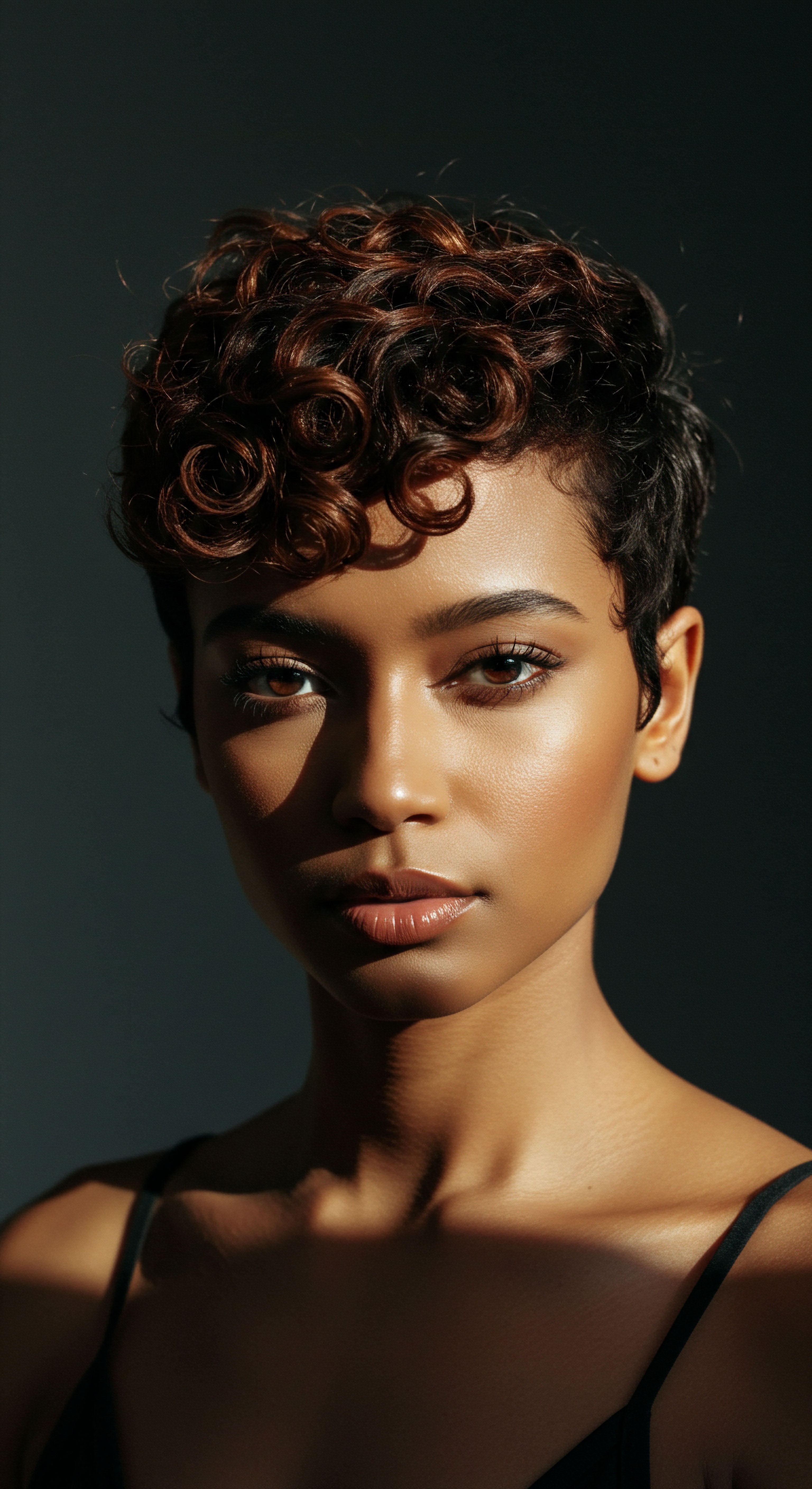
The Interplay of Texture and Ideal
While often depicted with smooth, flowing styles in art, evidence suggests that textured hair was prevalent in many ancient populations, particularly in the Mediterranean. Sculptors often stylized hair, using drilling and polishing techniques to create dramatically wavy or curled effects, which reflected contemporary hairstyles but also artistic conventions. The ideal of beauty, therefore, was not necessarily a uniform texture, but rather how hair was managed, adorned, and presented within cultural norms.
For instance, ancient Greek art often shows hair as textured, with rare examples of straight hair. This curly or wavy hair was worn long, rolled up, braided, or gathered. The ability to shape and style natural texture into desired forms was a skill highly valued. This recognition of varied hair types, and the creative ways societies worked with them, underscores a nuanced approach to beauty that celebrated manipulation and artistry.

Beyond Aesthetics ❉ The Hidden Costs of Ancient Beauty
The pursuit of hair beauty in antiquity sometimes came with hidden costs, particularly when it involved altering hair color. While natural dyes like henna were common, some ancient practices involved hazardous substances.
Ancient beauty practices, while often elaborate and symbolic, sometimes carried unforeseen health consequences, highlighting the historical tension between aesthetic ideals and well-being.
A compelling, albeit unsettling, case study involves the use of lead-based hair dyes in ancient Greece and Rome. Research has shown that a recipe for black hair dye, described in Greco-Roman texts, relied on a toxic combination of lead oxide and calcium hydroxide. This concoction was designed to darken gray or white hair, creating a youthful black hue. Scientists have discovered that this dye worked by causing the formation of nanocrystals of lead sulfide within the hair shafts.
While this early application of what we now understand as nanotechnology achieved the desired cosmetic effect, the absorption of lead through the scalp would have posed significant health risks, contributing to lead poisoning. This instance starkly illustrates a historical tension ❉ the powerful societal drive for a particular aesthetic could overshadow, or perhaps precede the understanding of, severe physiological consequences. It offers a somber reminder that the quest for beauty has long been a complex endeavor, sometimes at the expense of health.
This historical data point, where scientific analysis of ancient hair samples reveals the chemical reality of beauty practices, challenges a simplistic view of ancient beauty. It forces us to consider the sacrifices made in the name of aesthetic ideals and the evolving understanding of health and well-being.
| Ingredient Henna |
| Source Lawsonia inermis plant |
| Desired Effect Reddish-brown color, gray coverage |
| Potential Health Impact Generally safe, conditioning properties |
| Ingredient Lead Oxide & Calcium Hydroxide |
| Source Minerals |
| Desired Effect Black hair color |
| Potential Health Impact Lead poisoning due to scalp absorption |
| Ingredient Saffron |
| Source Crocus sativus flower |
| Desired Effect Blonde/lighter hues (Roman) |
| Potential Health Impact Generally safe |
| Ingredient Plant Extracts |
| Source Various herbs, berries |
| Desired Effect Varied colors |
| Potential Health Impact Generally safe, efficacy varied |
| Ingredient The pursuit of ancient hair beauty involved a range of natural and sometimes hazardous substances. |
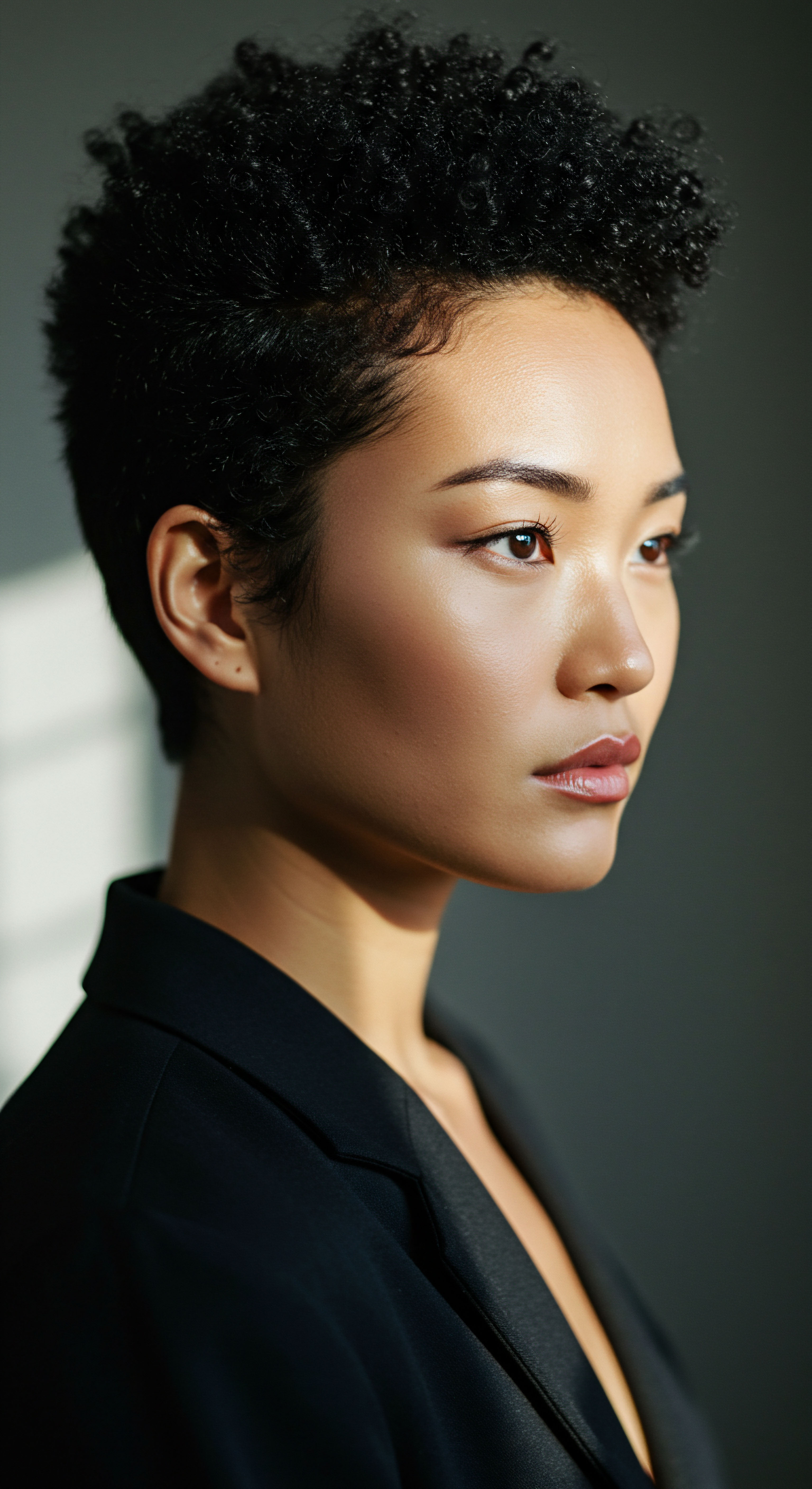
Holistic Influences on Hair Health
Beyond external applications, ancient societies often connected hair health to broader aspects of well-being, even if their understanding differed from modern trichology. Dietary habits, lifestyle, and even spiritual harmony were implicitly or explicitly linked to the vitality of one’s hair. In some cultures, thick, long, and neat hair was seen as a sign of fertility and prosperity.
Conversely, neglected hair might signify mourning or hardship. This holistic perspective viewed hair not as an isolated feature, but as a mirror reflecting one’s overall state of being.
The deep cultural roots of hair beauty in ancient civilizations serve as a powerful reminder that our relationship with our strands is a legacy passed down through millennia. It is a story of adaptation, artistry, and the enduring human desire to express identity and aspiration through one of our most visible and versatile features.

Reflection
As we gently draw our exploration to a close, the echoes of ancient definitions of hair beauty continue to resonate. What becomes abundantly clear is that hair, across these distant societies, was never merely a superficial adornment. It was a living manuscript, upon which cultures inscribed their values, their hierarchies, their spiritual beliefs, and their very understanding of what it meant to be human. From the meticulously crafted wigs of the pharaohs, signifying divine connection and earthly power, to the intricate braids of African communities, telling tales of lineage, age, and communal belonging, each strand held a story.
The journey through these historical landscapes reveals a profound and enduring truth ❉ the desire to define and express beauty through hair is deeply rooted in the human spirit. It is a testament to our innate creativity, our need for connection, and our continuous quest for identity, a quest that transcends time and geography. The ancient world, in its myriad expressions of hair beauty, offers us a gentle mirror, reflecting our own ongoing relationship with our hair – a relationship that continues to speak volumes, silently, yet powerfully, about who we are and who we aspire to be.

References
- Robins, Gay. The Art of Ancient Egypt. Harvard University Press, 2008.
- Synnott, Anthony. The Body Social ❉ Symbolism, Self, and Society. Routledge, 1993.
- Harlow, Mary, and Lena Larsson Lovén. A Cultural History of Hair in Antiquity. Bloomsbury Academic, 2022.
- Stephens, Janet. “The Hairdresser’s Art ❉ An Archaeologist Recreates Roman Hairstyles.” Journal of Roman Archaeology 21 (2008) ❉ 451-470.
- Walter, Philippe, et al. “Early Use of PbS Nanotechnology for an Ancient Hair Dyeing Formula.” Nano Letters 6.9 (2006) ❉ 2215-2219.
- Fletcher, Joann. “The Egyptian Hair Pin ❉ practical, sacred, fatal.” Internet Archaeology 42 (2016).
- Olson, Kelly. Dress and the Roman Woman ❉ Self-Presentation and Society. Routledge, 2008.
- Orizaga, Manuel. Cosmetics and Hair in Ancient Rome. Oxford University Press, 2013.
- Rose, Marice, and Katherine A. Schwab. Hair in the Classical World. Fairfield University Art Museum Exhibition Brochure, 2015.
- Omotos, Adetutu. “The Significance of Hair in Traditional African Culture.” Journal of Pan African Studies 11.4 (2018) ❉ 120-135.